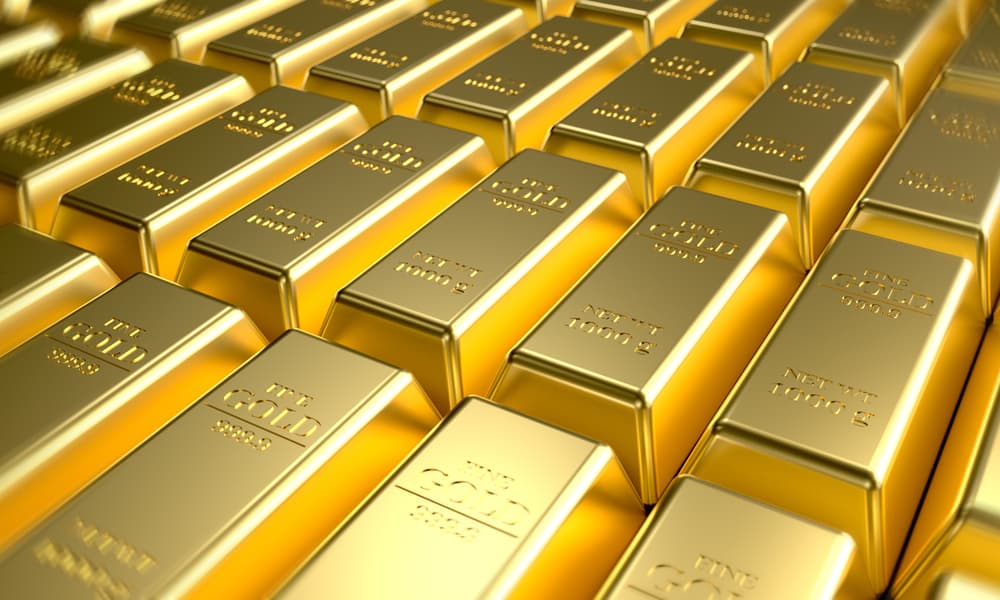President Trump’s nomination of Judy Shelton to the Federal Reserve Board is controversial, but much of what President Trump does seems to stir up controversy. That aside, the opposition against Judy Shelton’s nomination is particularly intense; it’s as if people think she is the devil incarnate.
During the confirmation hearings before the Senate Banking Committee, Senator Sherrod Brown stated,
“Ms. Shelton is not a conservative; she is far outside the mainstream. She’s off the ideological spectrum. For three decades, Ms. Shelton has been a prominent advocate for returning to the gold standard.”(1)
In an Opinion piece for the New York Times entitled “God Help Us If Judy Shelton Joins the Fed”, Steven Rattner, a counselor for President Obama’s Treasury Secretary stated,
“She wants monetary policy set by the price of gold, a long-abandoned approach that would be akin to a Supreme Court justice embracing the Code of Hammurabi.”(2)
Why are so many monetary experts opposed to sound money? Why do they equate support of the gold standard to “monetary quackery”? Could it be that most of the experts, who have received their PhDs in an era devoid of the gold standard, have not been taught the benefits of the gold standard? James Rickards says the “anti-gold reflex is intergenerational” meaning the older generation of economists were influenced by the “gold basher”, Milton Friedman, and the younger generation of economists have been trained to think that the gold standard has no place in a modern monetary system.(3) One of the criticisms of the gold standard is that gold is a “barbarous relic”. If gold is such a barbarous relic, why do central banks have enormous holdings of it? While they mock people who advocate that gold is a store of value and a hedge against currency collapse, they themselves are stocking up on this ancient asset. That should tip you off to their intentions – “what’s good for me, is not good for thee”.
In 1971, President Nixon removed the United States from the gold standard and the dollar has had a wild ride ever since. The dollar has lost approximately 94% of its value when compared to gold.(4) When Nixon cut the cord between gold and the US Dollar, he ushered in an era of fiat currency. The Federal Reserve system, as we know it, rests entirely on the confidence that exists in the US Dollar. The moment that confidence is lost, the money printing machines can no longer save us. As Judy Shelton puts it, “our monetary system is broken because it rests on the uncertain anchor of pure fiat money.” She is a proponent of sound money because without it, “free trade and free markets will always be subject to the whims of government.”(5) Gold acts as an accountability tool for fiscally irresponsible governments. Ludwig Von Mises, the famed Austrian economist, understood the importance of gold.
“The gold standard alone makes the determination of money’s purchasing power independent of the ambitions and machinations of governments, of dictators, of political parties, and of pressure groups. The gold standard alone is what the nineteenth century freedom-loving leaders (who championed representative government, civil liberties and prosperity for all) called “sound money”.(6)
The housing bubble of 2008 and the subsequent Great Recession should have taught us that the Too Big To Fail (TBTF) Banks needed fiscal accountability. The legislators, through the Dodd-Frank Act, tried to put measures in place that would reign in the indulgent practices of the big banks. This has been largely unsuccessful when we consider that the top 5 banks are even larger than they were in 2008. Without sound money holding our monetary system accountable, the monsters of off-balance sheet derivatives have thrived. In my soon to be released book, The Roots of the Federal Reserve, I shine a light within the dark caverns of the derivatives market.
“Greed is a powerful driving force that compelled investors and bankers to engage in “moral hazards”. The dollar signs attached to risky investments were more enticing than sound financial investments. The Too Big To Fail (TBTF) banks understood that the Federal Reserve would rescue them if they teetered on the edge of insolvency. The checks and balances of accounting practices were manipulated into shadow banking practices called off-balance-sheet (OBS) accounting. Hot shot Wall Street investors created new streams of cash that exploited the lower standards within the mortgage lending industry. The use of “credit risk transfer instruments”, such as mortgage backed securities (MBS), collateralized debt obligations (CDO), and asset backed securities (ABS) were invented to hide the credit risk within the mortgage industry. The shadow banking system created the derivatives market, yet another tool of obfuscation. Who became king of the derivatives market? None other than JP Morgan Chase.
According to the Fourth Quarter 2007 report from the Office of the Comptroller of Currency (OCC), JP Morgan Chase was leveraged 64:1 in the derivatives market. For every dollar the bank had in assets, they carried $64 in debt tied to purchases in derivatives. The derivatives market is fractional reserve banking on crack! It’s endemic within the banking system. When the massive bubble burst in 2008, it triggered the worst financial crisis since the Great Depression. The Federal Reserve stepped in as the lender of first resort awarding massive bailouts at near zero interest rates to banking institutions that engaged in “moral hazards”. The Federal Reserve’s willingness to lend freely and buy up the junk investment instruments that were rejected on Wall Street, communicated to the TBTF banks that they can continue with their reckless investment strategies and not face the consequences. Is it any wonder the TBTF banks haven’t changed their practices?
The OCC Third Quarter Report for 2019 reveals that TBTF banks are engaged in outrageously dangerous behavior. It shows that Goldman Sachs’ derivatives activities are leveraged 231:1! Yes that’s right, 231:1. When Lehman Brothers was deemed insolvent and forced to close their doors in 2008, causing 25,000 employees to lose their jobs, they were only leveraged 5:1. The irresponsible behavior of Goldman Sachs could trigger a collapse in the global economy at any moment.”(7)
When such a large concentration of assets is held in a small number of very powerful banks, which all do business with one another, it sets up an incredibly unstable monetary system. If one, seemingly insignificant problem arises anywhere in the system, it can quickly spread like a highly transmissible contagion resulting in a cataclysmic outcome.
To add insult to injury, the Dodd-Frank Act has a “bail-in” clause embedded within the roughly 2,300 pages. Most Americans are unaware of this, but it could deeply impact the security of their bank accounts. In the next banking crisis, instead of “bail-outs”, like the Quantitative Easing programs utilized by the Federal Reserve to bail-out the TBTF banks, a “bail-in” will be instituted to protect the banks from insolvency. What is a “bail-in” you say? If TBTF banks are failing because they are unable to pay off their debts from bets they made in the derivative markets, they can confiscate our deposits to do so. When we deposit our money into a bank, our deposit becomes an “unsecured debt obligation”. The language within the Dodd-Frank Act gives derivative claims super-priority over other claims such as, secured and unsecured debt obligations. In other words, if your bank is heavily leveraged within the derivatives market and those bets are called due, the bank is required to pay off the debt from derivatives before they pay your “unsecured debt obligation”. Your savings could be wiped out in an effort to rescue a TBTF bank because they engaged in “moral hazards” with the money you entrusted them with. This sounds frightening for good reason, IT IS! Bail-ins have already begun in Europe. In 2015, an Italian man hung himself after his entire €100,000 savings was confiscated in order to rescue a bank.(8)
While I am not licensed to give you investment advice, I encourage you to research which banks/credit unions are leveraged in derivatives in order to assess your options. Personally, I have exited TBTF banks and transferred all my accounts to a local credit union. While credit unions are not impervious to bail-ins, they are much less likely to engage in this “rescue” measure. Another important protective measure to consider is investing in gold and silver. It looks like Senator Mitch McConnell has garnished the support he needs from the GOP to secure the confirmation of Judy Shelton as the latest member of the Federal Reserve Board. A full senate vote for her confirmation is scheduled sometime during the week of November 16, 2020. You can bet this will cause the price of gold and silver to rise.
References
1. Confirmation Hearing for Federal Reserve Board Nominees. (February 13, 2020). C-SPAN. Retrieved from https://www.c-span.org/video/?469321-1/confirmation-hearing-federal-reserve-board-nominees.
2. Rattner, S. (July 22, 2020). God Help Us If Judy Shelton Joins the Fed. The New York Times Opinion. Retrieved from https://www.nytimes.com/2020/07/22/opinion/federal-reserve-judy-shelton.html.
3. Rickards, J. (2016). The New Case for Gold. New York, NY: Portfolio Penguin Publishing.
4. How Much Has the Dollar Lost Since 1971? (August 8, 2019). TradingView. Retrieved from https://www.tradingview.com/chart/USDCHF/dvl7mRLy-How-much-value-has-the-dollar-lost-since-1971/.
5. Shelton, J. (2012). Gold and Government. Cato Journal, 32(2), 333-347.
6. Ibid.
7. Sanger, L. (2020). The Roots of the Federal Reserve. Dallas, TX: Relentlessly Creative Books.
8. Brown, E. (2016). A Crisis Worse Than ISIS? Bail-Ins Begin. Retrieved from https://ellenbrown.com/2015/12/29/a-crisis-worse-than-isis-bail-ins-begin/.

